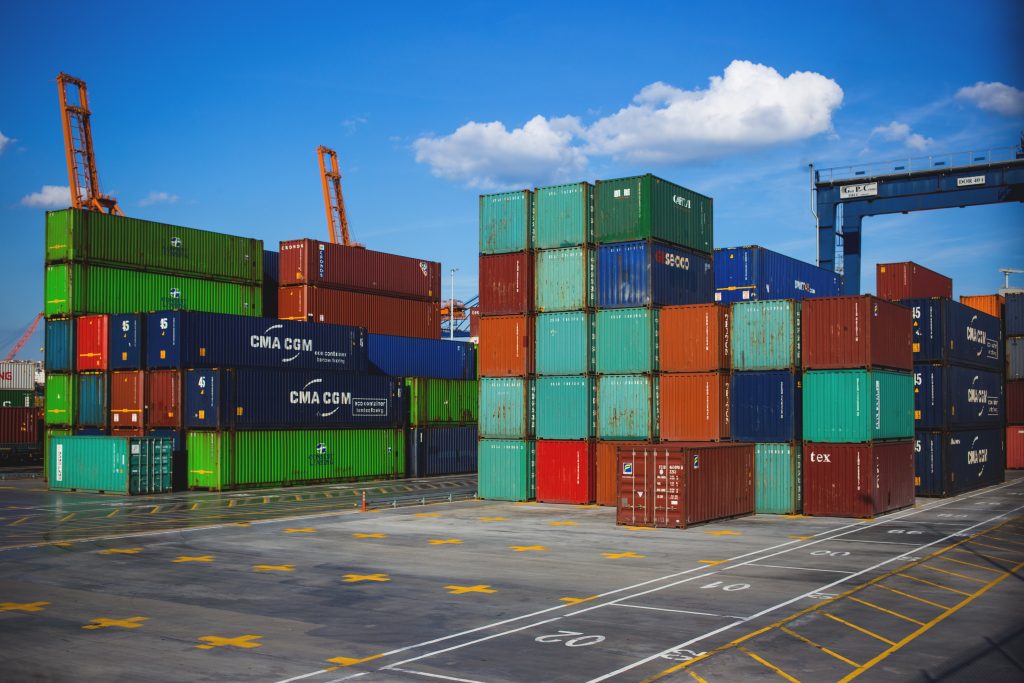
Work Health and Safety (WHS) Management system software doesn’t need to be complex. Yet that’s exactly how many Australian businesses feel about their WHS provisions.
So, if you’re unsure where to start with your WHS obligations, keep reading…
In this post, we’ll be discussing 10 key elements of WHS management system software and show you exactly how this type of software helps organisations just like yours to streamline their WHS and comply with all WHS obligations!
We’ll be discussing the following areas:
- What is WHS management system software?
- How does WHS software help?
- Key Element 1. Automated
- Key Element 2. Cloud-based
- Key Element 3. Tiered access levels
- Key Element 4. Compliance-proof
- Key Element 5. Reporting
- Key Element 6. WHS Project management
- Key Element 7. Risk management
- Key Element 8. Incident management
- Key Element 9. Asset management
- Key Element 10. Personnel Management
If you’re keen to learn more about these exciting elements, clear your schedule, grab a coffee, and let’s get started!
What is WHS management system software?
It’s a proven fact that a safer workplace offers three main benefits:
- A healthier bottom line
- Happier workers
- Increased productivity
WHS management system software will help your business achieve this goal and see improvements in all three of these areas.
How?
WHS management software is special software that is dedicated to streamlining and automating your workplace safety obligations.
With the right WHS management system software in place, you can be sure that things like errors in manual reporting, breakdowns in communications and outdated compliance documentation don’t leave your business exposed to liabilities and penalties.
How does WHS software help?
Can we ask you a quick question?
What does your business’ WHS system look like right now?
Do you already have a system in place for managing your WHS compliance?
If you do, is the system you use:
- Paper based?
- Software based?
- A combination of paper-based and software-based?
Depending on where you’re starting from, WHS management system software can improve how your business manages workplace health and safety.
WHS management system software helps with things like:
- Worker management
- Risk management
- Incident Management
- Contractor management
- Policies and procedures
- Asset safety
- Hazard registers
- Chemical management
- and more!
WHS management system software helps your business cover ALL your bases!
How?
By incorporating 10 key elements!
Here they are:
Key Element 1. Automated
The first key element of WHS management system software is that it’s automated.
Automated WHS software uses data from across your business to automatically create a complete work health and safety management plan.
To accomplish this, most WHS management system software uses a proprietary database containing MILLIONS of safety records.
This database is kept up to date by a team of safety professionals, to ensure that your business stays compliant with the latest regulations
The WHS management system software uses this data to automate the process of creating risk assessments, chemical risk assessments, job safety analysis, safe work records statements and more!
Key Element 2. Cloud-based
The second key element of WHS management system software is that it is cloud-based.
Most Australian businesses think this is the BEST part of paying for WHS software!
That’s because cloud-based WHS management system software is updated in real-time, and can be accessed by multiple users simultaneously.
This means that the software can be used by on-site users via mobile devices in a variety of ways, such as logging and receiving alerts, logging hazards and maintaining assets such as vehicles, fleets and machinery!
Whether your workers need to complete an audit down a mine shaft, log a report from the bush, or report a hazard from inside a lift, cloud-based WHS management system software will have your back!
Key Element 3. Tiered access levels
Saying goodbye to filing cabinets stuffed full of incident report forms can seem tempting, but how do you control who can see what when you move your WHS system to the cloud?
You do!
The third key element of WHS management system software is that it offers tiered access levels.
This means that the software ONLY shares information relevant to each individual user as decided by your WHS manager or key stakeholders.
Having tiered access levels means that your truck driver Keith won’t get access to your business’ confidential ROI projections yet your WHS manager Karen will be able to view any incident report that Keith files!
Tiered access levels and automated workflow help provide managers with the ability to proactively track and manage risks creating three lines of defence:
- WHS manager
- Managers
- Workers
This triple-layer defence all but guarantees that no important information will be overlooked!
Management can also use WHS management system software for granular reporting and to make informed business decisions
Key Element 4. Compliance-proof
If your business is still relying on a paper-based WHS system, you’ll know firsthand how easy it is to fall foul of compliance issues!
Australian legislative requires are constantly being updated, reworked and revised, making the changes difficult to track.
That’s why the fourth key element of WHS management system software is compliance-proof.
WHS management system software guides your business to complete compliance by creating pre-generated safety documents from a database of millions of records.
The software is built from the ground up to automatically address all current Australian legislative requirements and standards, including:
- Work Health and Safety Act 2011
- Work Health and Safety Regulation 2011
- AS/NZS 4801 (Occupational Health and Safety Management System Specification) ISO 45001 (Occupational Health and
- Safety Management System),
- AS/NZS ISO 31000:2009 (Risk Management)
- And more!
With the right WHS management software, your organization will never fall foul of regulation ever again!
Key Element 5. Reporting
The fifth key element of all good WHS management system software is reporting.
Cloud-based software enables your managers to access granular safety statistics in real-time, helping them stay updated about your WHS needs.
WHS management system software uses customisable dashboard reports to monitor and report key metrics. This system of on-going reporting helps ensure that your business stays compliant with all regulations and manages your safety obligations in a timely manner.
Most WHS management system software uses a set of over 100 pre-set dynamic reports to keep your team informed and well-placed to make the best possible business decisions.
Key Element 6. WHS Project management
The sixth key element of WHS management system software is that it can automatically generate complete Work Health and Safety Management Plans for your business!
It can also automatically create WHS plans for any WHS-related projects.
This helps free up your WHS managers’ time while guaranteeing that your business remains in complete regulatory alignment, helping to eliminate the risk of fines and other penalties.
If your business currently uses a paper-based WHS system, then moving to WHS software will give your happier, more productive workers AND a healthier bottom line!
Key Element 7. Risk management
As a business owner, you want to be prepared for any risks that may affect your organisation.
That’s why WHS management system software puts risk management at the heart of everything it does.
WHS software can identify all workplace hazards at your business and automatically create a risk profile. By identifying workplace hazards and quantifying the risks, the software can prioritise the necessary corrective actions.
Most top WHS management system software integrates almost ALL KNOWN risks, including:
- Hazards and chemical risks
- Enterprise risks
- Corporate risks
- Project risks
- and environmental risks
So, if you’re looking to prepare your business against risks, WHS management system software could be just what you need.
Key Element 8. Incident management
The eighth key element of WHS management system software is incident management.
This crucial element makes it simple to implement easy access tools to record and manage all incidents that occur on your premises.
These include:
- Injuries
- Near misses
- Environmental incidents
- Property damage
- And more!
This important element makes it possible for WHS management system software to streamline reporting for a faster, more effective response.
If you’re looking for a simple, easy-to-use method for quickly and accurate recording and management all incidents at your workplace, this important element shouldn’t be overlooked!
Key Element 9. Asset management
For business looking to keep their asset maintenance up to date, this ninth key element of WHS management system software is worth a look; asset management.
WHS management system software makes it SIMPLE to register all your business’ key assets, such as:
- Vehicles
- Plant equipment
- Machinery
This helps you to drastically simplify your pre-start inspections and create real-time report on how your conditions and maintenance requirements are doing.
Asset management is a critical element of any WHS management system software as it provides a complete register of all key assets within your organisation.
This lets you schedule routine inspections and maintenance in the most cost-effective manner, helping to prevent breakdowns and expensive repair bills as well as ensuring that your business stays as productive as possible.
The software can help you log and schedule audits and inspections, and send automated reminders to your workers to carry out key checks. By recording the outcomes of physical inspections on-site via online and offline access, your WHS managers will be better able to assign the appropriate corrective actions to your staff through user-configurable electronic forms.
Asset management is one of the key reasons to invest in WHS management system software. It lets your business stay one step ahead of potential problems and maintain a healthy bottom line!
Key Element 10. Personnel Management
The tenth key element of WHS management system software is personnel management.
Your workers are your biggest asset, so arguably THIS is the most important key element of the entire WHS system.
WHS management system software lets you effective management ALL your workers.
This includes:
- Personal
- HR staff
- Contractors
- Visitors and the general public
WHS management system software helps you manage crucial worker information including training records, assessed competencies and track completion of required KPI’s.
It can help you track who attended which training course and who needs a follow up or refresher course.
But that’s not all.
WHS management system software also lets’ you manage contractors, too!
WHS management system software lets you implement an automated pre-qualification process for any contractors who work for you.
This can include the supply of all relevant documents, licenses and completion of online inductions. This helps to make the contractors happier while improving their productivity.
WHS management system software lets you simple and effortlessly manage the authoring, approving and distributing key compliance documentation such as policies and safe work procedures (SWPs).
Conclusion
Take the complexity out of WHS management with WHS management system software today! Sign up now for a free trial or call us for a free consultation from one of our safety professionals!
Related posts
- WHS Management System: Examples and Key Components
- How to Measure and Evaluate WHS Management Systems




